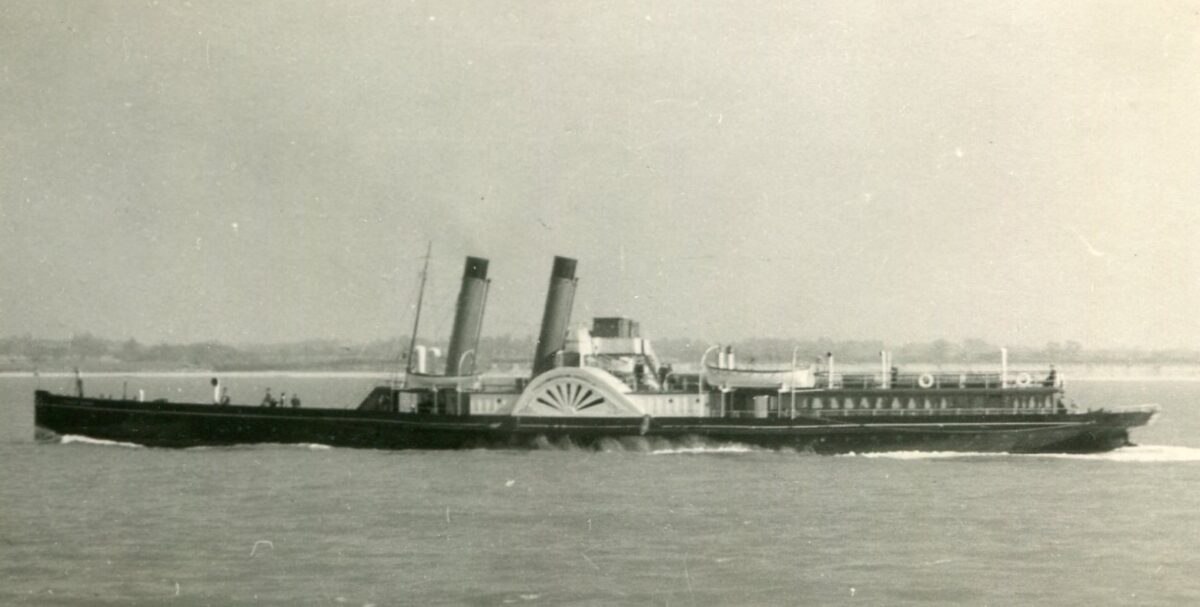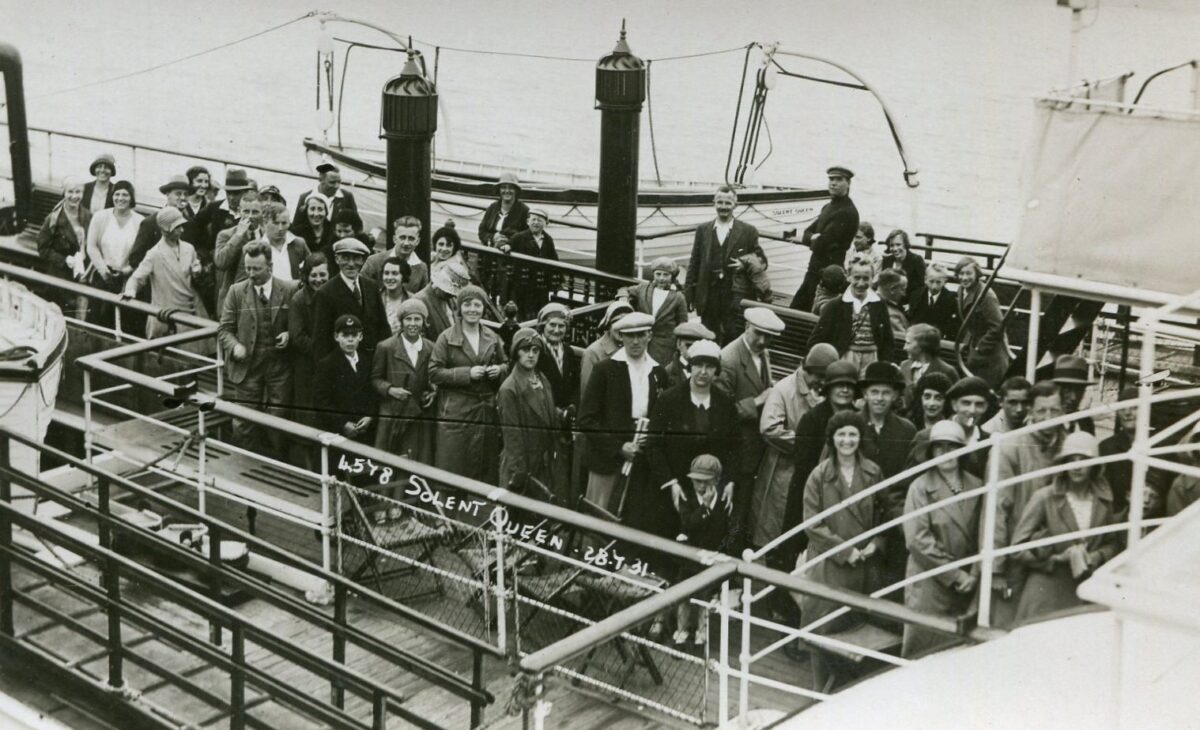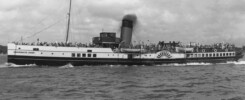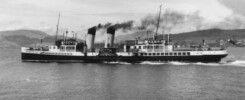
On Sunday 31st October 1948 Red Funnel’s Solent Queen arrived under tow in the scrapyard of T W Ward on the Thames at Grays in Essex.
She was a ship which might never have been. What became Red Funnel had previously ordered another paddle steamer, which they named Princess of Wales, from Barclay Curle on the Clyde but she had the misfortune to be run down and cut in two on trials off Skelmorlie on 16th June 1888 thereby beating even Titanic into the record books for shortness of career by sinking before her maiden voyage. Solent Queen was quickly ordered, again from Barclay Curle, as her replacement undertaking her trials on the Clyde one year later in April 1889.
Solent Queen was intended as a crack excursion steamer to take advantage of the growing market in the 1880s for longer coastal trips from Southampton around the Isle of Wight, to the Sussex Coast Piers in the east and along the Hampshire and Dorset Coasts in the west with the ability also to undertake the bread and butter work in the Solent linking Southampton, Cowes, Ryde and Southsea.
As built she was already a tad outdated as by the 1890s and 1900s larger flush decked and altogether more modern paddle steamers were being built nationwide for the coastal trade. Although she continued to run some longer excursions up the First World War, the arrival of other better equipped paddle steamers in the fleet from 1898 onwards (particularly Lorna Doone, Balmoral and Bournemouth Queen) meant that she was more often relegated to shorter excursions and packet work between Southampton and Cowes. From time to time before the First World War and during the 1920s and up to 1931 she was based each summer at Bournemouth for the Swanage service where she was usually partnered by Cosens’s twin funnelled Monarch.

In that era at Bournemouth Pier there was a resident photographer who, when the paddlers were alongside, blew a whistle to attract the attention of passengers and then took their pictures which were subsequently displayed in his kiosk for purchase so that people could buy a souvenir of their day out starring themselves. As a result there is a tremendous quantity of these sort of deck shots of paddle steamers at Bournemouth from that period still in circulation today.
In 1936 Solent Queen lost her Board of Trade Class III Certificate for sea-going work and spent the remainder of her life running only on categorised waters within Southampton Water and the Solent most particularly on the Cowes ferry. To make more space for vehicles on her foredeck her mast was re-sited to the forward end of the promenade deck.
Solent Queen’s first boiler lasted for only 13 seasons but the replacement in 1902 had a much longer life of 46 years still being in service right up to August 1948 when issues were discovered with it and the ship was withdrawn.
Arriving in the breaker’s yard on 31st October 1948 work commenced deconstructing Solent Queen in November. However not everything was lost. Her binnacle was acquired by the National Maritime Museum and for many years was on display in the Neptune Gallery near the paddle tug Reliant. However the massive revamp of the museum some years ago swept away not only the Reliant but also Solent Queen’s binnacle. It remains in the National Maritime Museum’s reserve collection but is no longer on display. And that’s a shame because it is a lovely bit of kit.
Kingswear Castle returned to service in 2023 after the first part of a major rebuild which is designed to set her up for the next 25 years running on the River Dart. The Paddle Steamer Kingswear Castle Trust is now fund raising for the second phase of the rebuild. You can read more about the rebuilds and how you can help if you can here.
John Megoran
This article was first published on 31st October 2020.


